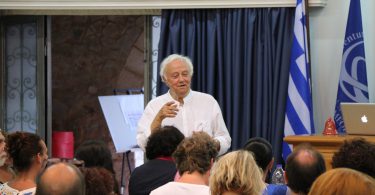
Abstract
Constipation is defined as bowel movements that are infrequent or difficult to pass. At any one time between 6% and 30% of the population may report constipation. It is frequent health problem leading to great discomfort to the person and affects his or her quality of life. Constipation becomes a regular problem especially in paediatric age group. Most of the people consider constipation is decrease in frequency of bowel movement. In children mostly the constipation is functional or habitual because bowel movements are varying along with age. Homoeopathy has an answer for constipation many constitutional remedies indicated. Every patient is unique and deserves a treatment plan tailored to suit their individual needs
Keywords; Constipation, Homoeopathic remedy
Introduction
Constipation is defined as infrequent passage of hard stools. Patients may also complain of straining, a sensation of incomplete evacuation and either perianal or abdominal discomfort. Constipation may occur in many gastrointestinal and other medical disorders
Epidemiology
Constipation, however it is defined, is a common problem in the community. The exact prevalence of constipation depends on the definition used; prevalence estimates range from 2% to 28%. The evidence that life-style factors are causally linked to constipation is weak, although nonsteroidal anti-inflammatory drug use and the use of other constipation-inducing medications are important risk factors. Constipation is not of clinical importance until it causes physical risks or impairs quality of life.
Pathophysiology
Colonic sensorimotor disturbances and pelvic floor dysfunction are the most widely recognized causes. Other factors, such as reduced caloric intake, disturbances of the microbiome, anatomical issues, or medications, can also contribute. Constipation generally results from inadequate fibre or fluid intake or from disordered colonic transit or anorectal function. These results from neurogasteroenterologic disturbances certain drugs, advancing age or in association with a large number of systemic diseases that affect the gastrointestinal tract. Constipation of recent onset may be a symptom of significant organic disease such as tumor or stricture. In idiopathic constipation a subset of patients exhibits delayed emptying of the ascending and transverse colon with prolongation of transit (often in the proximal colon) and a reduced frequency of propulsive colonic contractions (HAPC’S) outlet obstruction to defecation (also called as evacuation disorder) may cause delayed colonic transit which is usually corrected by biofeedback retraining of the disordered defecation. Constipation of any cause may be exacerbated by chronic illnesses that lead to physical or mental impairment and result in inactivity or physical immobility.
Constipation may be of 2 types
1. Acute constipation
2. Chronic constipation
1. Acute constipation: This term refers to temporary or short termed constipation it is usually a reaction to particular cause or isolated incident. There is no underlying medicinal cause.
2. Chronic constipation: This term refers to a long term effective in activity of colon which has some underlying pathological causes.
Causes
Gastrointestinal causes
Dietary
• Lack of fibre and/or fluid intake
Motility
• Slow-transit constipation
• Irritable bowel syndrome
• Drugs
• Chronic intestinal pseudo-obstruction
Structural
• Colonic carcinoma
• Diverticular disease
• Hirschsprung’s disease
Defecation
• Anorectal disease (Crohn’s, fissures, haemorrhoids)
• Obstructed defecation
Non-gastrointestinal causes
Drugs
• Opiates
• Anticholinergics
• Calcium antagonists
• Iron supplements
• Aluminium-containing antacids
Neurological
• Multiple sclerosis
• Spinal cord lesions
• Cerebrovascular accidents
• Parkinsonism
Metabolic/endocrine
• Diabetes mellitus
• Hypercalcaemia
• Hypothyroidism
• Pregnancy
Others
• Any serious illness with immobility, especially in the elderly
• Depression
Signs and symptoms
A constipated patient may be otherwise totally asymptomatic or may complain of one or more of the following
- Abdominal bloating
- Pain on defecation
- Rectal bleeding
- Spurious diarrhoea
- Low backache
The following also suggest that the patient may have difficult rectal evacuation:
- Feeling of incomplete evacuation
- Straining
- Digital exctraction
- Tenesmus
- Enema retention
Complications
- Hemorrhoids
- Anal fissures
- Rectal prolapse
- Diverticular disease
- Chronic back pain
- Hernia
- Urinary tract infection
Diagnosis
- Clinical presentation and evaluation
- Endoscopy
- Anorectal manometry
- Balloon expulsion testing
- Barium enema
- Defecography and magnetic resonance defecography (MRD)
- Colonic transit study
According to the Rome IV criteria for constipation, a patient must have experienced at least two of the following symptoms over the preceding three months:
- Fewer than three spontaneous bowel movements per week
- Straining for more than 25% of defecation attempts
- Lumpy or hard stools for at least 25% of defecation attempts
- Sensation of anorectal obstruction or blockage for at least 25% of defecation attempts
- Sensation of incomplete defecation for at least 25% of defecation attempts
- Manual maneuvering required to defecate for at least 25% of defecation attempts
Diet
Common causes of chronic constipation include a lack of fiber (inadequate consumption of fruits, vegetables, and other foods containing fibers), no sufficient drinking water or liquids. In these cases, constipation is usually not a serious problem and can be controlled and treated by correcting nutritional habits and lifestyles.
Studies have indicated that a high-fiber diet can increase stool weight, resulting in a decreased colon transit time, while poor-fiber diet induces constipation.Moreover, it has been revealed that increased fiber diet could improve symptoms in patients with normal colonic transit and anorectal function, while constipated patients with delayed colonic transit patients have not improved by increasing dietary fiber. Increasing fiber consumption does not make colonic transit normal, and may even worsen their symptoms through the fiber’s metabolism as a result of the gas produced. On the other hand, it has been demonstrated that diets with soluble fiber (i.e., psyllium or ispaghula), but not fiber insoluble diet (wheat Bran), can be associated with the improvement of the symptoms in chronic constipation. A systematic review showed that soluble fiber improved constipation symptoms in IBS with varying effects on abdominal pain
Homoeopathic remedy
Alumina:
A very general condition corresponding to this drug is dryness of mucous membranes and skin, and tendency to paretic muscular states. Sluggish functions, heaviness, numbness, and staggering, and the characteristic constipation find an excellent remedy in Alumina. It produces irritation of mucus membrane with dryness with extreme secretion and paralysis of involuntary muscles as those of rectum and of the nerves muscular system generally. Soft stool passes with great difficulty, children’s liable to this kind of constipation, rectum feels sore and painful after passing stool. No desire for and no ability to pass stool, until there is no large accumulation. Even a soft stool is passed with difficulty. Great straining. Constipation of infants (Collins; Psor; Paraf) and old people from inactive rectum, and in women of very sedentary habit. Evacuation preceded by painful urging long before stool, and then straining at stool.
Nux vomica:
The typical Nux patient is rather thin, spare, quick, active, nervous, and irritable. He does a good deal of mental work; has mental strains and leads a sedentary life, found in prolonged office work, over study, and close application to business, with its cares and anxieties. Constipation, with frequent ineffectual urging, incomplete and unsatisfactory; feeling as if part remained unexpelled. Constriction of rectum. Irregular, peristaltic action; hence frequent ineffectual desire, or passing but small quantities at each attempt. Absence of all desire for defecation is a contra-indication. Alternate constipation and diarrhea-after abuse of purgatives. Urging to stool felt throughout abdomen
Silicea:
Silica patient is cold, chilly, hugs the fire, wants plenty warm clothing, hates drafts, hands and feet cold, worse in winter. Lack of vital heat. Prostration of mind and body. Great sensitiveness to taking cold. Rectum feels paralyzed. Stool comes down with difficulty; when partly expelled, recedes again. Great straining; rectum stings; closes upon stool. Feces remain a long time in rectum. Constipation always before and during menses; with irritable sphincter ani. Stool scanty or composed of hard lumps, light colored; expulsion difficult, as from inactivity of rectum. Consequently, the stool has to be removed mechanically. Constipation always occurs before, during and after menses. The stool may be in small balls or large and soft or large and hard, but there is much straining and sweating about the head and great suffering while straining; the rectum becomes impacted, he strains until he is weak and exhausted
Bryonia Alba:
Bryonia affects especially the constitution of a robust, firm fiber and dark complexion, with tendency to leanness and irritability. Mucous membranes are all dry. The Bryonia patient is irritable; has vertigo from raising the head, pressive headache; dry, parched lips, mouth; excessive thirst, bitter taste, sensitive epigastrium, and feeling of a stone in the stomach; stools large, dry, hard; dry cough; rheumatic pains and swellings; dropsical effusions into synovial and serous membranes. No inclination or desire for stool. Stool is dry hard knotty, as if burnt. Headache due to constipation with dry tongue and thirst for large quantity of cold-water at large intervals. Stools brown, thick, bloody; worse in morning, from moving, in hot weather, after being heated, from cold drinks, every spell of hot weather.
Ratanhia:
Hard and broken evacuations, with urgent want to evacuate (with straining) and protrusion of haemorrhoidal excrescences.-Ineffectual want to evacuate, with troublesome pains in loins.-Straining; so hard that she cried out; great protrusion of haemorrhoids, followed for a long time by burning in anus. Constipation: stool hard with great straining; protrusion of haemorrhoids followed by long lasting aching and burning in anus ; bowels inactive; pain after stool as if splinters of glass were sticking in anus and rectum . Excruciating pains after stool; burning after soft stool
Opium
Obstinate constipation; no desire to go to stool. Round, hard, black balls. Faeces protrude and recede (Thuj; Sil). Spasmodic retention of faeces in small intestines. Constipation from inactivity of the intestines. Constipation, sometimes of long standing. Constipation: of children; of good-natured women; of lead-poisoning; (Confined bowels with bleeding, furred tongue and drowsiness.).Offensive black stool.
Sanicula:
Stools large, heavy and painful. Pain in whole perineum. No desire until a large accumulation. After great straining only partially expelled; recedes, crumbles at verge of anus (Mag mur). Very offensive odor. Excoriation of skin about anus, perineum, and genitals. Stool: hard, impossible to evacuate; of grayish-white balls, like burnt lime; crumbling from verge of anus with the odor of limburger cheese
Natrum Muraticum:
Sensation of contraction of anus; torn bleeding, smarting afterword; stool dry, hard, difficult, crumbling; stitches in rectum; involuntary, knows not whether flatus or faeces escape. Burning pains and stitching after stool.
Reference
- Mallick PS, Chakrabarty T. Constipation and Homoeopathic Cure. Journal of Medical and Pharmaceutical Innovation. 2021 Sep 27;8(43s).
- Lembo A, Camilleri M. Chronic constipation. New England Journal of Medicine. 2003 Oct 2;349(14):1360-8.
- Costilla VC, Foxx-Orenstein AE. Constipation: understanding mechanisms and management. Clinics in geriatric medicine. 2014 Feb 1;30(1):107-15.
- Sanap SP, Chakravorty T. Homoeopathic Management of Constipation. Journal of Medical and Pharmaceutical Innovation. 2022 Feb 2;9(45).
- Qureshi N, Kambale MN. Constipation and Homoeopathic Treatment. Journal of Medical and Pharmaceutical Innovation. 2019 Nov 18;6(31).
- Forootan M, Bagheri N, Darvishi M. Chronic constipation: A review of literature. Medicine(Baltimore).2018May;97(20):e10631. doi: 10.1097/MD.0000000000010631. PMID: 29768326; PMCID: PMC5976340.
- Boericke W. Pocket manual of homoeopathic materia medica & repertory. New Delhi: B. Jain Publishers; 1994.
- Clarke J. A dictionary of practical materia medica. Sittingbourne: Homæopathic Book Service; 2000
About Author:
Dr Terese Kavya Raju
MD part 1
FMHMCH





